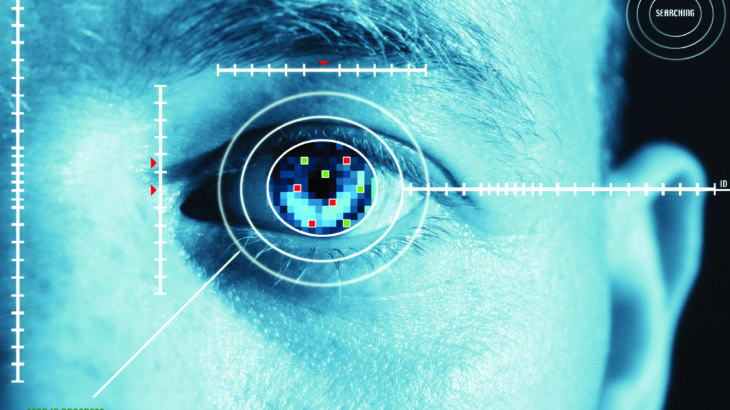Shifty eyes long have been thought to signify a person’s problem telling the truth. Now a group of University of Utah researchers are taking that old adage to a new level.
Educational psychologists John Kircher, Doug Hacker, Anne Cook, Dan Woltz and David Raskin are using eye-tracking technology to pioneer a promising alternative to the polygraph for lie detection. The researchers’ efforts to commercialize their new technology reached a milestone recently when the University of Utah licensed the technology to Credibility Assessment Technologies (CAT).
CAT is based in Park City, Utah, and managed by venture capitalists Donald Sanborn and Gerald Sanders, who are the president and chairman, respectively.
“The eye-tracking method for detecting lies has great potential,” Sanders says. “It’s a matter of national security that our government agencies have the best and most advanced methods for detecting truth from fiction, and we believe we are addressing that need by licensing the extraordinary research done at the University of Utah.”
In addition to bringing the technology closer to the marketplace, the licensing also helps maintain the university’s leadership in lie-detection research. The university has been a leader in the field for at least 30 years, through the work of Raskin and Kircher, who both completed substantial research on the subject. Raskin now is a professor emeritus.
Tracking eye movement to detect lies became possible in recent years because of substantial improvements in technology. The Utah researchers say they are the first to develop and assess the software and methods for applying these tests effectively.
Using eye movement to detect lies contrasts with polygraph testing. Instead of measuring a person’s emotional reaction to lying, eye-tracking technology measures the person’s cognitive reaction. To do so, the researchers record a number of measurements while a subject is answering a series of true-and-false questions on a computer. The measurements include pupil dilation, response time, reading and rereading time, and errors.
The researchers determined that lying requires more work than telling the truth, so they look for indications that the subject is working hard. For example, a person who is being dishonest may have dilated pupils and take longer to read and answer the questions. These reactions are often minute and require sophisticated measurement and statistical modeling to determine their significance.
“We have gotten great results from our experiments,” says Kircher. “They are as good as or better than the polygraph, and we are still in the early stages of this innovative new method to determine if someone is trying to deceive you.”
Besides measuring a different type of response, eye-tracking methods for detecting lies has several other benefits over the polygraph. Eye tracking promises to cost substantially less, require one-fifth of the time currently needed for examinations, require no attachment to the subject being tested, be available in any language and be administered by technicians rather than qualified polygraph examiners.
Research into this method began five years ago, when faculty members started discussing the concept casually. They secured seed funding and the university’s Department of Educational Psychology hired new faculty with relevant skills. Each member of the research team fills an important function, but few ever dreamed they would be working on lie-detection technology.
“I came to the University of Utah to do work in reading comprehension, but I jumped at the chance to get involved with this research,” Cook says. “That’s the fun of this kind of job. You get the opportunity to collaborate with your colleagues to achieve more than any of you could individually.”
People across campus assisted the researchers. Help included research assistance from graduate students, intellectual property management through the Technology Commercialization Office and business development advice through the David Eccles School of Business’s Lassonde New Venture Development Center, which links faculty researchers with master’s of business administration students and graduate students from science, engineering and law.
The researchers still have more development work to do, but they hope the recent licensing will help them attract the additional funding necessary and interest from potential customers. Numerous government agencies, such as the U.S. Department of Defense, Department of Homeland Security, Customs and Border Protection, and Department of Energy use polygraphs regularly to screen employees and applicants for sensitive positions, and these agencies always are looking for more effective ways to detect lies.
“It’s exciting,” Cook says, “that our testing method is going to be taken from a basic research program to commercial use.”



